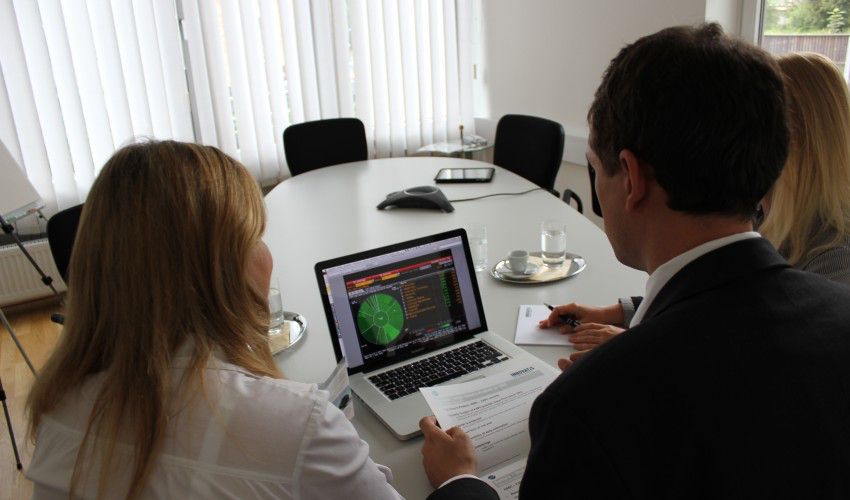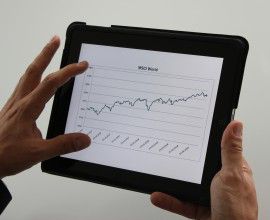
Outlook Interest Rates and Market Liquidity
What drives markets indeed?
Most investors would answer earnings. They grow overall on the long run and vary depending on individual competition and general economy. There is a business cycle and sector rotation too. Many investors pay attention to interest levels. They need them as input for valuation models or simple for determining allocation to the risk-free investment alternative. In recent years more and more investors consider central bank actions as key driver for markets. Take a look at the chart below to compare performance of US stock market versus US Fed balance sheet.
It looks like a strong link between the broad US stock performance and US Fed balance sheet.
What has happened in the world of central banks all over the world during recent years?
There is a long-term trend in decreasing interest rates for both short-term Fed Funds Rate and long-term Treasuries – see also chart for US rates during last 20 years below. While central banks can set short-term rates they have limited influence on long-term rates.
Major global interest rates have come down a long way over recent decades. This development has accelerated a lot during financial crisis in 2007-2009. In recent years many rates even have been approaching zero.
Some central banks have become very aggressive and pushed their rates even below zero. Other central banks switched to assed purchases. And some have been doing both – such as the European Central Bank (ECB).
When central banks buy government bonds they try to support economic growth by providing liquidity and making investments cheaper. However they also force investors to riskier assets than they would buy otherwise. They blow up asset valuations for almost any kind of asset class. And they give governments little incentive to settle fiscal budgets or even reduce debt.
Does this matter for investors?
Yes. Most valuation models react very sensitive to small changes of the safe investment alternative that determines the discount factor for futures cash flows. Also in real life global markets normally show significant moves if central banks signal interest rates changes. Just consider a buyer who recalculates the mortgage for a home he is going to buy after a rate change. Think of trusts or pension funds that allocate assets to reach a required minimum yield. Don’t forget governments with interest burden on high debt levels. Many governments in Emerging Markets have foreign debt and thus even depend in foreign central bank policy.
One year ago US Fed has stopped increasing its balance sheet by driving down asset purchases. Markets stagnated afterwards. In December last year US Fed signaled a turnaround by increasing interest rates for the first time after almost 10 years. This shook up markets. Stock markets dropped – in particular in emerging countries. Foreign currencies lost versus US Dollar. Commodities declined even faster.
And the US Fed is not the only central bank that drives global liquidity. Most other central banks are still expanding liquidity and lowering interest rate. See table below:
| (% of GDP) | interest rates | ||||
| balance sheet $ billions | 2015 | 2006 | trend | level | |
| US Federal Reserve | 4486 | 25% | 6% | up | zero |
| Bank of China | 4899 | 53% | 56% | down | positive |
| Bank of Japan | 3575 | 70% | 24% | down | zero |
| European Central Bank | 3113 | 25% | 13% | down | negative |
| Swiss National Bank | 640 | 88% | 20% | down | negative |
While the US plays a leading role in capital markets you can see in the short list above that there is a lot more money on the global table. Even Switzerland with a population of just 8 million has a remarkable balance sheet of $640b which equals almost the value of annual GDP in this country. The absolute interest rates level is below zero.
Will monetary expansion continue?
The key question for investors is where do central banks go from here? Investors who used to think rates could never go negative have been proven to be wrong. Investors who expected central banks were not allowed to lend money to their government have been surprised as well. So how long will this continue and what comes next.
At the end of last year Fed policy makers indicated that they would raise interest rates four times in 2016.
If you ask forward interest rate markets now there will be no US interest rate hike for the next few months and one step by the end of the year. Three weeks ago they were almost sure of no change this year at all. See also chart below for varying probabilities of US Fed Fund rates being between 0.25-0.50 or 0.50-0.75 by the end of 2016. Currently market prices – which never lie – indicate a probability of 27% for no change, 40% for +0.25% (and 24% for +0.50%).

Virtually all other globally leading central banks are still on the path of expansion i.e. more asset purchases and lower rates.
So the overall trend is still positive and there are good reasons that this will continue.
The biggest reason to proceed monetary expansion is the positive experience in recent years and the uncertainty that might follow a change. Few years ago economists around the world would have expected current monetary and economic setup to cause hyper-inflation. In fact rather the opposite is true.
Growth is low and might be curbed by dramatically increased levels of government debt. In turn there is little incentive and considerable risk for central banks to force their government to pay more interest by increasing rates. Central banks are not independent from their governments. And they even have good reason to expect bad consequences for economic growth and for financial stability that arises from a potential government debt crisis they might trigger by rate hikes.
Furthermore central banks act not independently from each other. US Fed’s going against the flow caused the US dollar to reach record highs weighing on US exports. In fact many central banks around the world are considered to be in a currency devaluation competition – some analysts even call it foreign exchange war. Thus it is difficult for a central bank to lead rate increases. In the extreme case of Switzerland’s appreciating currency they might be even forced to expand monetary setup just to ease increasing pressure on domestic export industry.
What could change the game?
So the US Fed has been trying a turnaround back to normal and has not been very successful so far. The rest of the world is still producing even more money. What does it take to turn around interest rates to an increasing path?
Erwin Lasshofer and his INNOVATIS team think the strongest trigger would be inflationary pressure. In our opinion this can only be caused by unexpected strong growth. High debt levels and aging population in major economies leave no high probability for this scenario. A huge sudden productivity gain caused by a technical revolution might be the trigger. It certainly would not be expected if it ever happened.
Another scenario could be a debt crisis caused by a major government default. In particular the Eurozone or emerging countries with considerable foreign debt are at risk. However, only if this crisis causes investors to consider major government bond markets not as safe harbors anymore this would change the game.
Anyway for a game change investors have to lose hope that they can earn a positive return from trading bonds that already have negative yields. They have to quit lending money to governments or bank and paying for it. We think it takes a fundamental government bond crisis to destroy investors trust. This might be triggered by another banking crisis. Banks are already suffering from diminishing profits due to extremely low interest rate levels.
Currently neither inflationary pressure nor an alternative safe investment is to be seen. Thus we expect more money to be pushed into markets by global central banks.
Archives
- June 2019 (1)
- March 2019 (1)
- February 2019 (1)
- December 2018 (1)
- May 2018 (1)
- January 2018 (1)
- December 2017 (2)
- October 2017 (1)
- September 2017 (1)
- August 2017 (1)
- July 2017 (1)
- June 2017 (2)
- May 2017 (2)
- April 2017 (2)
- March 2017 (3)
- February 2017 (2)
- January 2017 (2)
- December 2016 (4)
- November 2016 (3)
- October 2016 (3)
- September 2016 (2)
- August 2016 (5)
- July 2016 (2)
- June 2016 (4)
- May 2016 (1)
- April 2016 (4)
- March 2016 (5)
- February 2016 (3)
- January 2016 (3)
- December 2015 (5)
- November 2015 (5)
- October 2015 (4)
- September 2015 (3)
- August 2015 (7)
- July 2015 (7)
- June 2015 (5)
- May 2015 (6)
- April 2015 (9)
- March 2015 (9)
- February 2015 (9)
- January 2015 (9)
- December 2014 (11)
- November 2014 (10)
- October 2014 (3)
- September 2014 (1)
- August 2014 (2)
- July 2014 (2)
 Investor Login
Investor Login



